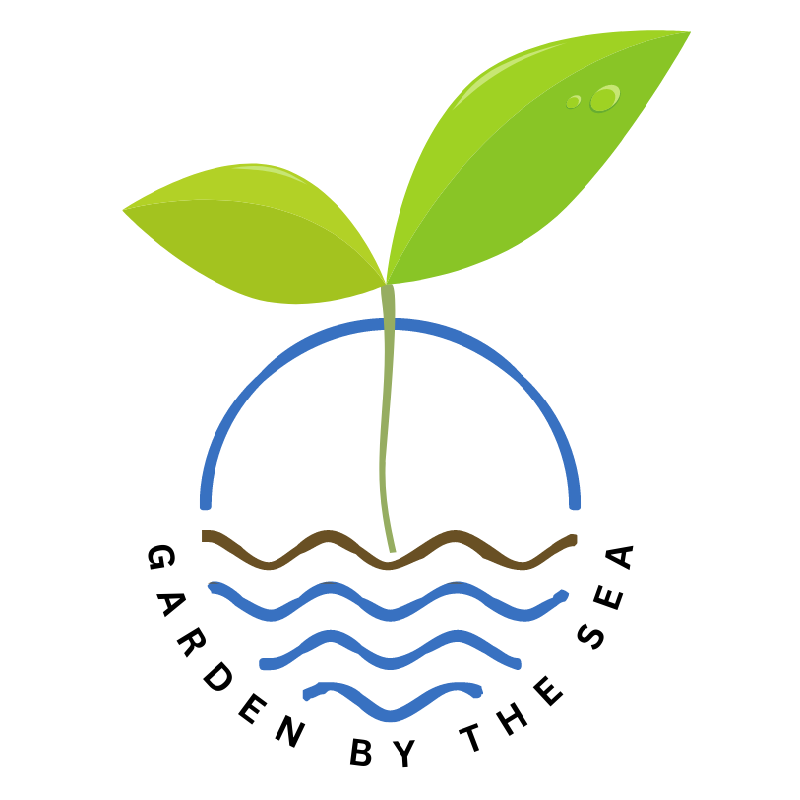Spring Gardening
Somehow nature and timing have not been on my side this year. I am way behind: either it rained all day, or, when the weather was nice, I had other commitments. Time To Make Gardening My Priority!
Today I’d like to focus on writing a few pointers for those who are new to Ocean Shores and have no experience with the quirks of coastal gardening, especially here in Ocean Shores. At our Garden by the Sea season opening, we met lots of folks new to this area who asked many great questions. There are certain rules to observe. Let me share two of them with you for a head start on your projects.
 Rule number one: if you think the deer won’t eat your plant, think again. Their reading skills leave a lot to be desired, and they ignore the ‘deer resistant’ label on plants. They eat them anyway. If they don’t like them, they will spit them out but the end result for the gardener is the same regardless of whether the deer swallow them or not. Your plant is ruined. Ask your experienced fellow Ocean Shores neighbor what to plant safely such as daffodils, garlic, and onions in the spring, rose campion in the summer, or – as I was told – rosemary. I plan to try rosemary this year for the first time so we will see about the deer resistant part.
Rule number one: if you think the deer won’t eat your plant, think again. Their reading skills leave a lot to be desired, and they ignore the ‘deer resistant’ label on plants. They eat them anyway. If they don’t like them, they will spit them out but the end result for the gardener is the same regardless of whether the deer swallow them or not. Your plant is ruined. Ask your experienced fellow Ocean Shores neighbor what to plant safely such as daffodils, garlic, and onions in the spring, rose campion in the summer, or – as I was told – rosemary. I plan to try rosemary this year for the first time so we will see about the deer resistant part.
 If in doubt, there are two suggestions: assume your plant will be eaten. Or build a fence high enough that the deer can’t jump. Hint: 6ft height is not enough. There is the option of using thin deer fencing material – which I have done successfully – around specific garden beds but the best bet, in my opinion, is to let deer be deer, and learn which plants they will definitely leave alone. I remember my first year here in Ocean Shores. I went to Aberdeen to buy blueberry and other plants. When I mentioned where I live the clerk said ‘oh, you are buying deer food’. Yes, that’s living in our little wildlife paradise. Until we make peace with it and plan our gardens accordingly.
If in doubt, there are two suggestions: assume your plant will be eaten. Or build a fence high enough that the deer can’t jump. Hint: 6ft height is not enough. There is the option of using thin deer fencing material – which I have done successfully – around specific garden beds but the best bet, in my opinion, is to let deer be deer, and learn which plants they will definitely leave alone. I remember my first year here in Ocean Shores. I went to Aberdeen to buy blueberry and other plants. When I mentioned where I live the clerk said ‘oh, you are buying deer food’. Yes, that’s living in our little wildlife paradise. Until we make peace with it and plan our gardens accordingly.
Rule number two: Another rule for gardening in coastal Ocean Shores is soil temperature. My first year here was spent spreading wildflowers everywhere in my yard. Nothing germinated. A friend pointed out to me the secrets of soil temperature. If the ground is too cold, regardless of nice weather, your seeds will just not germinate. An inexpensive meat thermometer will do the trick and give you the information you need. Stick it into the soil about 2 inches deep. If it shows temperatures below 40F you may want to wait before planting seeds. Starting them indoors is an option. An exception are the so-called cold weather crops such as leaf lettuce, spinach, parsnip, peas, radish, beets, broccoli, and Brussels sprout seeds can be planted at 35- 40F soil temperature.
Rule number three: Another aspect of coastal gardening is a much shorter growing season than even locations only an hour away from the coast. It’s just a different climate, and us coastal gardeners learn to adapt. For example, my best year of growing tomatoes was to find varieties that go from seed to fruit in 60 days and leave them in the greenhouse. Early Girl and the Sun Gold hybrid are my favorites and my most successful ones. However, admittedly I continue to use the trial-and-error method in the garden with varying results. It works for me and makes gardening life interesting.
If you would like to know more, just stop by at the Garden by the Sea on a nice day. Someone will always be there for a chat. We also offer free workshops throughout the year about sustainable gardening, as well as topics such as soil preparation and plant selection for our coastal gardening.
For further information: if you are interested in renting a plot at Garden by the Sea, volunteering, checking our events calendar, or making a donation, please visit www.gardenbytheseaoceanshores.org , or find us on Facebook: Garden by the Sea, a community garden. For questions or to be added to our mailing list, please email Karen@gardenbytheseaoceanshores.org .
This article was originally published in the Ocean Observer May 2022.



